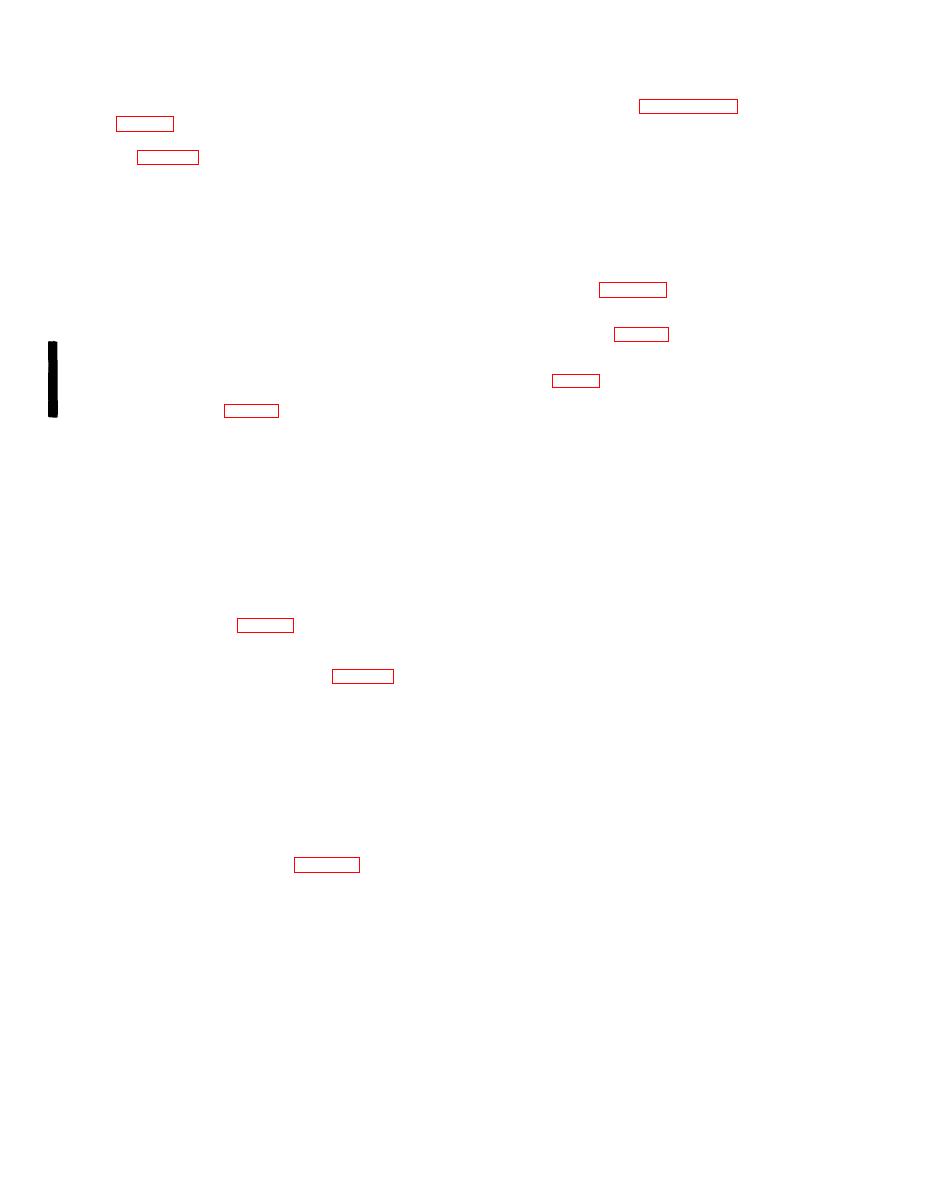 |
|||
|
|
|||
|
Page Title:
Multi-Kit Hookup of Closely Spaced Kits |
|
||
| ||||||||||
|
|
 TM 9-1375-213-12-1
a. General. Instructions in paragraphs 2-3b, 2-4
(1) Pull protective sheath from end of firing
and 2-5 apply to a multi-kit hookup. However, in
lead (A, fig. 2-10).
the hookup of closely spaced kits, the kits must be
(2) Untwist and separate the two bared con-
interconnected. First the demolition circuits are
ductors (B, fig. 2-10), and assure that conductors
interconnected by taping the detonating cords to-
are clean and uncorroded. If corrosion is present,
gether at the plastic sleeve area, thus forming an
it may be easier to strip insulation from conduc-
explosive junction of the electric blasting caps and
tors below bared portions than to scrape corrosion
detonating cord (see b below). Then the rocket
off bared conductors. Each wire must have at least
motors are interconnected by attaching the firing
two inches of bared conductor.
cable connector of one rocket motor to the interkit
connector of another. BOTH of these interconnec-
(3) Splice one conductor of the firing lead to
tions are necessary to assure simultaneous firing
each conductor of the field firing lead. Make sure
of all kits (see c below); figure 2-13 shows the gen-
splices are secure.
eral layout for these interconnections.
(4) Insulate each splice with tape to prevent
b. Interconnection of demolition circuits (form-
shorting.
ing explosive junction) (fig. 2-14).
f. Remove dust cover from M 57 and dust
(1) Cut nylon tapes of each demolition circuit
cover/shorting plug from demolition circuit
wooden subpack, if not previously done, and re-
electric lead and insert electrical connector
move the lid (fig. 1-7).
of demolition circuit into mating connector
CAUTION
on firing device M57 (A fig. 2-11).
Ensure that the combination shorting
CAUTION
plug and dust cover is assembled to
When laying out detonating cord, make
the connector of the demolition cir-
cu it . Do not remove the shorting
sure there are no kinks, sharp bends or
plug until ready to connect the
overlapping of detonating cord.
d e m o l i t i o n circuit.
g. Lay out demolition circuit electrical wire on
(2) Remove each demolition circuit from its
ground in a direction away from the kit and then
subpack and plastic packing bag. Place each plas-
lay detonating cord on ground from end of wire
tic bag over each rocket nozzle and tape securely
back to kit.
around narrow section of nozzle. This is most im-
portant if kits are to be left emplaced for a long
h. Remove the protective adhesive tape from the
period prior to firing since it provides a dust and
cap well of the shaped charge and insert the non-
moisture barrier.
electric blasting cap (crimped to end of detonating
cord) into the cap well (B, fig. 2-11). Place blasting
NOTE
cap into well and secure by threading priming
Normal demolition procedures would call
for connection of the demolition circuits
adapter M1A4 into well.
AFTER interconnection of the rocket mo-
i. Remove yellow-tagged safety plug (fig. 2-12)
tors and connection of the circuit to the
from rocket motor. Retain the safety plug until kit
field firing lead. This standard order of
is fired.
assembly is being varied in this procedure
to ease the assembly.
NOTE
Personnel that regularly use the kits
CAUTION
should keep one or two safety plugs on
When laying out- detonating cord, make
hand to replace a damaged or missing
sure there are no kinks, sharp bends, or
plug.
overlapping of individual cords.
j. Take plug and blasting machine to the firing
(3) Lay out demolition circuit elecctrical wire
on ground in a direction toward the center of the
location.
assembled kits and then lay detonating cord on
k. Proceed to final preparations (para 2-9).
ground from end of wire back to its kit.
(4) Remove the protective adhesive tape from
each shaped charge cap well and insert each non-
2-7. Multi-Kit Hookup of Closely Spaced Kits
electric blasting cap (crimped to end of detonating
(Two, Three or Five Kits)
cord) in the well of its kit's shaped charge (B, fig.
2-11). Secure the caps in the wells by threading
NOTE
each priming adapter, M1A4 into its well.
No instructions are given for closely spaced
(5) Place all plastic covered detonating cord/
cap junctions together so that they are all aligned
multi-kit hookups using four kits since
there would be little difference in the cra-
tering effect between 3 or 4 kit hookups.
A hookup of more than five kits is not
considered practical.
2-12
Change 3
|
|
Privacy Statement - Press Release - Copyright Information. - Contact Us |